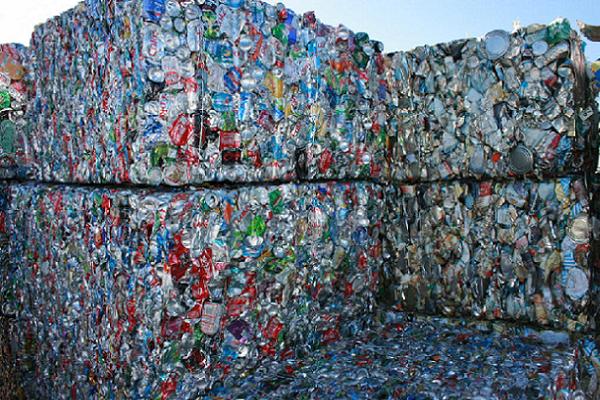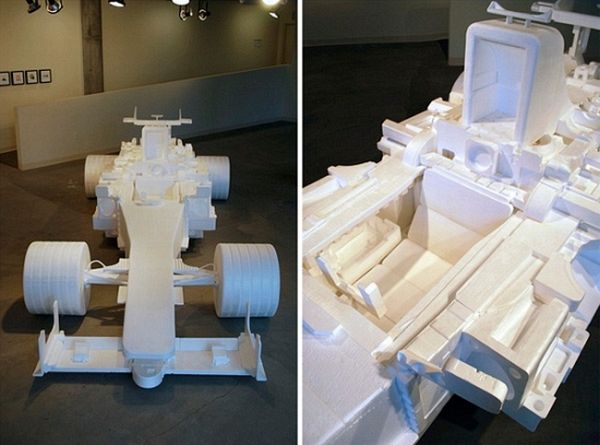
Recycling is an environment friendly activity. Recycling helps to reduce damage done to the environment due to excessive non-composing waste and excessive production. However, there are some items which are harmful to the environment if recycled, therefore a professional rubbish removal company should be engaged to remove the waste. The things we will talk about in this article are the ones prohibited by most municipal systems and are or no use to commercial recycling industries as well.
Here are the 15 environment enemies which should never be recycled.
1. Wet paper
It sounds a little hard to believe how can paper and a little water be of harm to the ecosystem! But paper soaked in water can cause contamination as the fibers are severely damaged. That is it is easy tear wet paper. Most recycling industries reject paper items which have been soaked in water.
2. Batteries
General non-rechargeable batteries, should not be put to recycle especially through regular trash. Because most dumps are not developed to handle the toxic materials that leak out of such batteries. They should be dumped at the hazardous waste collection centers. Recycling rechargeable batteries, however, that contain lithium ion or nickel-metal hydride, may be profitable to recycle.
3. Diapers
Dirty diapers are harmful for the environment. Disposable diapers are a great health risk as they contain Dioxin traces, which is an extremely toxic by-product of the paper-bleaching process. This chemical is carcinogenic, it is listed as the most toxic of all cancer-linked chemicals by the EPA and it is banned in most countries. Disposable diapers also generate much more solid waste and use up much more raw materials, like crude oil, wood pulp etc.
4. Aerosol cans
Even though Aerosol cans are general metal but spray cans contain propellants and chemicals and should be put in the regular dumps. Most municipal systems across the world treat them as hazardous waste material.
5. Brightly dyed paper
Strong paper dyes or any other brightly dyed paper is considered as a hazardous waste. The white middle papers are okay to recycle. These kind of dyed papers are generally sorted out and burned or landfilled.
6. Ceramics and pottery
Ceramics include coffee mugs, cups, tiles etc. Pottery includes all sorts of clay materials. Clay can be recycled if dried, slaked, and dried again to soften. Ceramic materials are quite illogical to recycle as they can serve other purposes.
7. Household chemicals and motor oils
All sorts of household chemicals, motor oils, liquid coolants etc. are considered hazardous waste materials and they are usually handled separately from regular dumps. Motor oil is recyclable but cause noxious fumes causing suffocation.
8. Glass
Glass from household things like the light bulbs, window panes, mirrors etc. might contain small amounts of mercury. Regular water bottles or kitchen jars are excluded from this list. But beer bottles etc are a abrasion danger to trash handlers. Glass may also cause operational problems in incinerators.
9. Disposable medical equipment (DME)
Disposable medical equipment like injection syringe, tubing, scalpels are biohazardous material and should be dumped at the hazardous waste collection centers. The medications left inside these items are also prone to produce harmful chemicals.
10. Mixed Papers, tissue, magazines, and office paper
Napkins, tissue papers and paper towel are absorbed in germs and should be considered for composting rather than recycling. Also these kinds of papers cause litter problems. They cause uncontrollable fire and burning them may release dioxin or metals from the inks, carbons etc.
11. Pizza boxes
Surprising? It’s true, pizza boxes absorb all the grease which drips off the pizza. This oil is most likely to contaminate the cardboard boxes, thus making it impossible even after recycling, to produce clean paper from it.
12. Plastic bags or grocery bags and wraps/Bottle and Jar Lids/ Plastic screw-on tops
If possible, clean and reuse the bags. Do not dispose of them in regular waste dumps. These plastic bags and wraps can cause a lot of littering problems. They do not degrade and burning them creates toxic smoke and they do not decompose or compost.
13. Textile
Textiles and clothing like shoes, linen, rags, and carpets etc. are prone to rat infestations and insect breeding. And burning of polyester clothing or plastic clothing like raingear, rubber shoes, gumboots, nylon rags and carpets can produce toxic fumes which can cause serious health risks if inhaled.
14. Styrofoam
Styrofoam or polystyrene, which is made of plastic and is commonly used for padding in packaging delicate appliances, takes a long time to break down and may also be ingested by animals resulting in blockage to their digestive tracts and death by starvation.
15. Food wastes
Food scraps, fish wastes, solid and liquid fats, hide hair etc. attracts insects and animals, creates bad odor and also produces harmful gases. They also slow down decomposition and may even settle after decomposition. Consider composting rather than recycling these.




